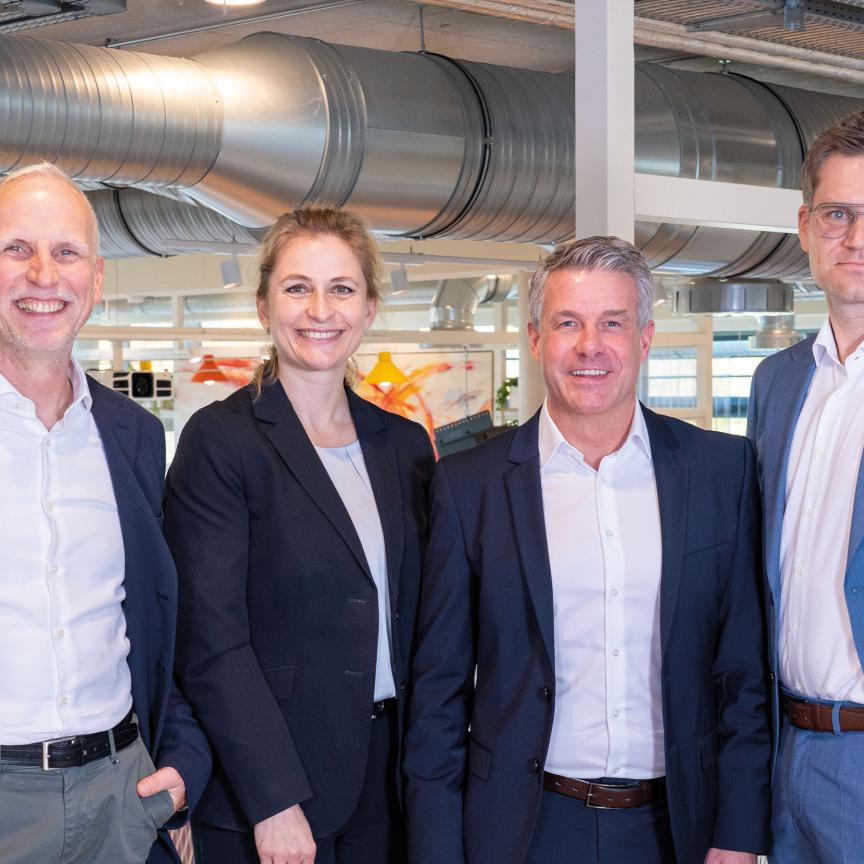Odos Imaging has won the Vision Award 2014. The Scottish-based company’s 3D imaging time-of-flight system won out over five other shortlisted entries. Imaging and Machine Vision Europe (IMVE) sponsors the €5,000 prize and Warren Clark, IMVE's publishing director, presented the award to Chris Yates, CEO of Odos at the Vision Show in Stuttgart on 4 November.
Speaking to Imaging and Machine Vision Europe, Yates commented: 'Winning the Vision 2014 Award is an exceptional honour, and provides a huge boost to the entire team at Odos Imaging, all who have worked tirelessly over the past two years to transform nascent technology into a robust product for the industrial market.’
Odos Imaging’s 3D systems are based on pulsed time-of-flight technology. The current model is the Real.iZ-1K (1.3 megapixel), with the Real.iZ-4K (4.2 megapixel) due to be released in 2015. Each pixel making up the sensor can be used to measure both ambient light and range, allowing the systems to generate separate images of the scene in both range and intensity modes. The system includes all the features of a conventional machine vision camera, with the additional benefit of individual pixel range measurements.
Yates said about the company’s approach to time-of-flight: ‘New technical approaches can often bring substantial benefits to the whole market, by expanding the range and applications of machine vision solutions, a fact that I am sure was recognised by the jury in selecting Odos Imaging for the 2014 Vision award.'
Time-of-flight works by measuring the time taken for light to travel from the source, be reflected by an obstruction, and return to a sensor. This is used to calculate the distance from the device.
Yates said that while many products have been developed for a wide variety of applications using this principle, the results obtained are typically single-point measurements, and often provide a series of distance slices similar to that of a laser scanner.
In contrast, Odos’ system, the Real.iZ VS-1000, collects a complete image of the scene in front of it. By using pulsed light which illuminates the entire scene, the company was free to use relatively simple pixels for the sensor. This means both range and intensity images can be created, as Yates explained: ‘Smaller pixels allow higher-resolution image sensors suitable for 3D imaging to be designed and fabricated. At the same time, a more conventional pixel design provides the possibility to operate as a standard machine-vision camera and capture intensity images.
‘This new capability opens the door to new applications for machine vision. Neither the range nor the intensity image is primary; either or both can be used depending on the application requirements.’ For example, the range image can be used to simply remove the background of an intensity image beyond a certain distance as a means of effective image segmentation.
Yates believes that high-resolution 3D imaging such as this will help the growth of the machine-vision sector in non-traditional applications. He commented: ‘Over the past two years we have seen increasing acceptance of the time-of-flight as a technology, particularly in the growth areas of logistics and agriculture applications. This can also been seen as part of a wider trend in the machine vision market, to expand the range and application of various imaging technologies, such as hyperspectral imaging, high-speed imaging, and non-visible imaging. This theme was apparent throughout the Vision 2014 exhibition, with many new and interesting products entering the market for the first time.'
Odos intends to expand its family of camera systems and the company has a four megapixel version under testing in laboratory conditions. ‘A complete family of products is planned, covering a wide range of cost and performance points,’ Yates said. ‘Excellent underlying technology drivers are present with lower noise and more sensitive pixel designs possible as well as a wider range of more efficient light sources available, all providing an attractive product development programme and an optimistic future for the company.’
He added that the award provides external validation of Odos’s approach. ‘Innovative technical directions often require a strength of belief in the end product, and having had our technology reviewed against other highly innovative products, and by such an eminent and experienced jury, has been invaluable for a young company.'
Odos Imaging is a venture-backed spin-out from the Siemens Technology Accelerator in Munich, originally started to commercialise 3D imaging techniques.

